At its core, UX design is all about efficiency, ensuring that the user gets from point A to point B in the simplest way possible. A great-looking UI is important, but an intuitive experience is even better, and many different laws and concepts have been established to create a balance between both. This has created the default UX assumption that faster is better. But is that always the case?
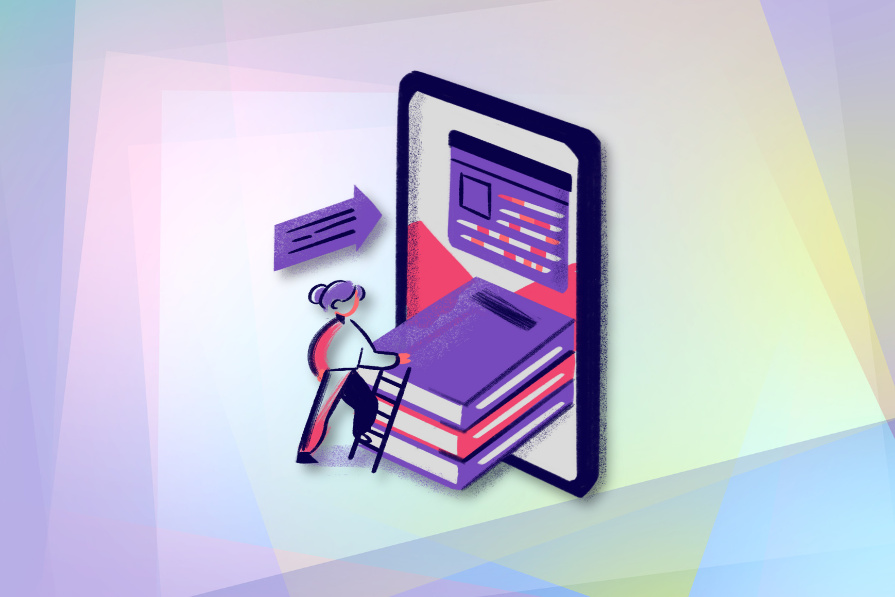
Depending on the context, slower UX can be just as, if not more, effective than the current default of efficiency at all costs. This article will challenge the default assumption while exploring the benefits, techniques, and ideal use cases of slower UX design.
Modern design has become all about seamlessness. Ensuring the UI’s speed and intuitiveness has become the focus of many design teams, and for good reason.
A frictionless user experience guarantees that both the user and platform goals are achieved. However, while utility-focused UX has resulted in clean UI, it often ends up being colder, which is not always optimal. Much of the creativity that kickstarted many designers’ passion for the industry (including myself) has often taken second place to a more surgical and optimized approach to UX.
Take, for example, this video published on TikTok by Zander Withurst in 2024 titled ‘Stop adding colors to your UI’. In the video, Zander redesigns a mobile UI, opting for a more conventional yet monotone color palette. Here’s the before:
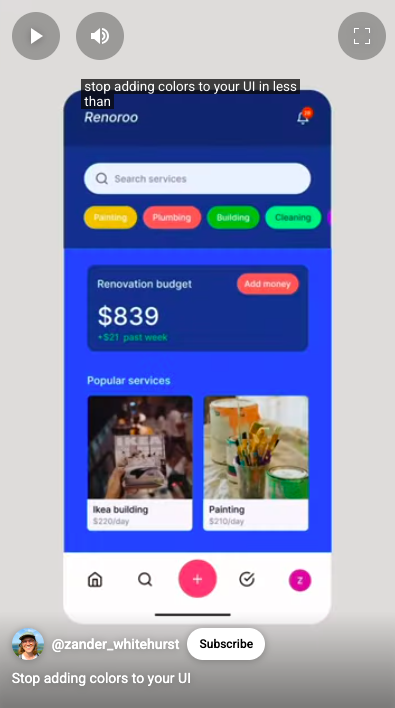
And here’s the after:
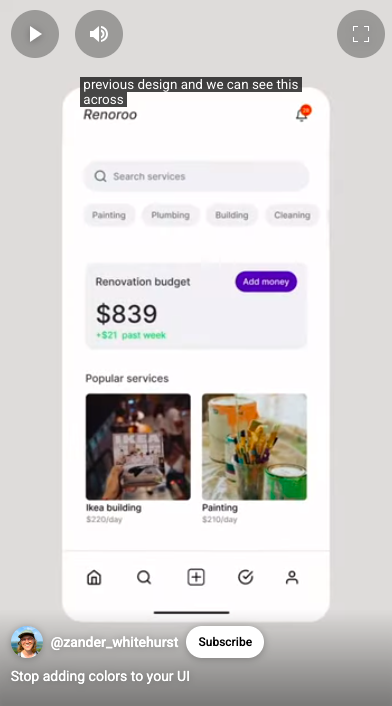
And the viewers noticed that the video was flooded with comments criticizing how the revised UI had become devoid of color. This started a discussion on how modern UI had resulted in many platforms becoming carbon copies of each other, leaving no room for creativity:
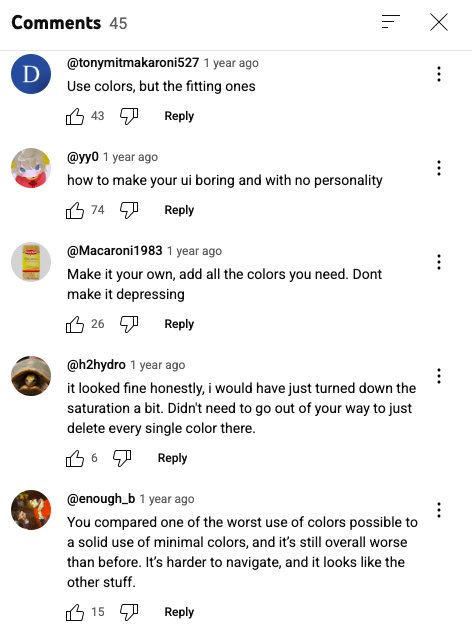
Today’s world has started to look all the same, because while that type of design offers a ‘cleaner’ look, many things are lost in the process, such as narrative, differentiation, and even trust. That is to say that a core element of UX design is being lost over time, namely, storytelling.
Storytelling in UX design means creating a narrative in order to establish a connection between the user and the product.
When humans hear a good story, the neurons of the person telling the story and the listener mirror each other in a process called neural coupling. In anticipation of a story’s resolution, the brain can then release dopamine, which can often make it easier to remember.
Using storytelling in UX transforms mundane interactions into an experience that a user wants to return to. Practical examples include fitness apps that celebrate user achievements and media platforms that use teasers and previews to build anticipation. Rather than jumping straight into the product’s functionality, such as providing cold statistics to show growth or allowing users to quickly access their media, users are guided through a journey filled with intentional pauses that make their experience memorable.
This can also have positive impacts from a business standpoint. Think about social media in today’s world. Personal branding has moved to the forefront of many social media pages, such as Instagram and TikTok. Why? Because people trust other people more than they do faceless companies. Storytelling can deepen an individual’s emotional engagement and resonance, increasing trust, memory, and even the willingness to buy a product.
When applying this to digital products, increased trust and user engagement can increase conversions because trust is properly built before a purchase is expected, and repeat purchases are more likely because the experience was more memorable. However, before we dive into what techniques can be used for better storytelling in UX, it’s important to first decide if and when slower UX should be applied during the design process.
Slower UX definitely has its benefits, but that doesn’t mean it’s a good fit for all projects. In some cases, efficiency should be the priority, such as when users want to quickly find an item or easily access information. The key is to know which is the better approach, depending on the project, that is to say, when the story should be prioritized over speed.
Before jumping into any project, it’s important to analyze the following criteria to figure out whether slow UX is the best fit for your design process:
As a general rule of thumb, speed and efficiency should be a priority if the product’s value depends on how efficient it is. This can, however, make such products less memorable and harder to differentiate from other products that use similar design patterns. After all, story-driven narratives can be a great differentiator.
On the other hand, storytelling and slower pacing should be a priority if the product’s value depends on how emotionally impactful it is for the user. This should be done in moderation, however, as if the user is already familiar with the product, too many extra steps can be frustrating.
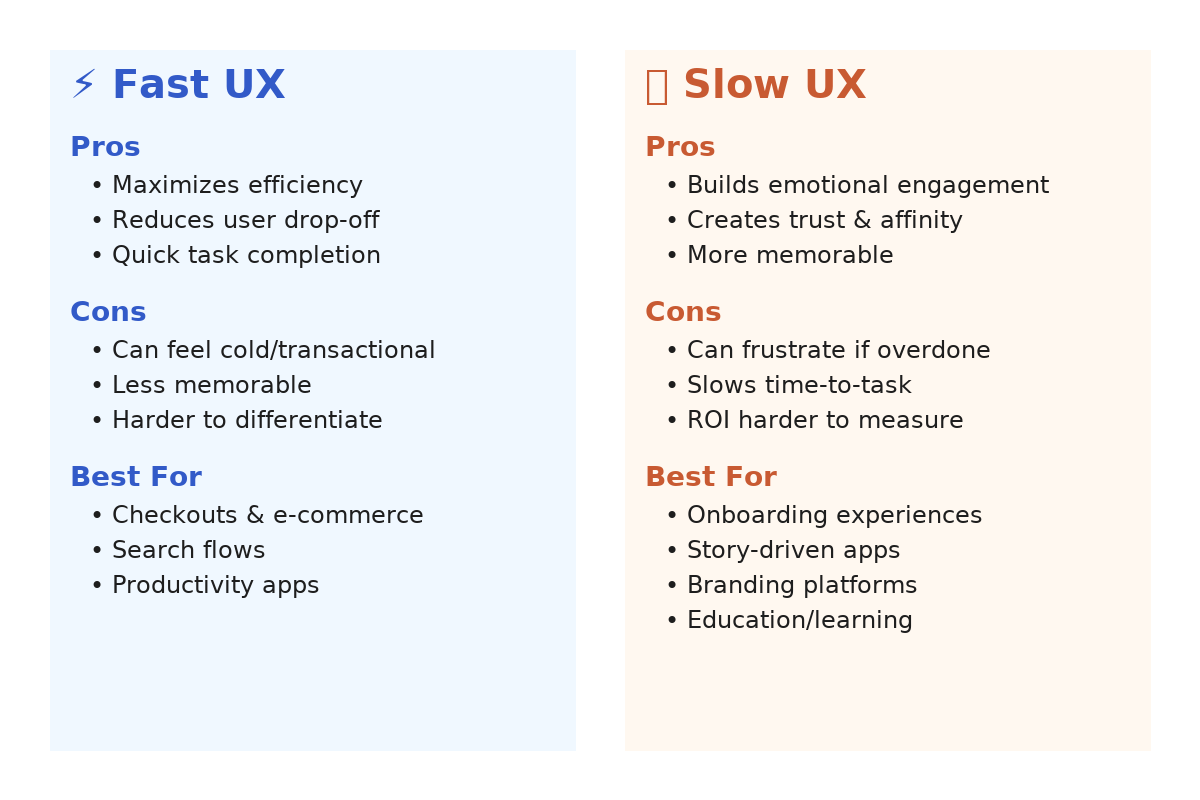
All stories have a three-act text structure, a beginning, middle, and end, and in order to effectively utilize storytelling in your designs, you should understand your designs’ narrative flow. This means mapping out the user’s journey, from initially accessing the page to meet their ultimate goals.
Coupled with prior research on your target audience and their pain points, it becomes possible to identify points in that journey that could benefit from a little slowing down. Once those points are established, using the following techniques can change the pacing of the journey without losing user engagement.
| Technique | Description | When to use | Benefit | Example |
|---|---|---|---|---|
| Immersive onboarding | An immersive onboarding experience introduces the user to the product or platform by guiding them through a mini journey and evoking emotional involvement in the user | In UX, the start of the journey is onboarding. Much like how first impressions matter when meeting new people, a successful onboarding experience can be the difference between purchasing a product and forgetting it completely | Creates a good first impression, builds trust and familiarity fast | Duolingo: Users are welcomed by the Owl, asked about their motivations, and helped in goal setting |
| Progressive disclosure | Revealing information to the user step by step to decrease progressive load | Read this LogRocket article to learn more about it: https://blog.logrocket.com/ux-design/progressive-disclosure-ux-types-use-cases/ | Lets the user take in information at their own pace | Most onboarding processes |
| Visual storytelling | The use of visual elements such as images, videos, and animations is a powerful means of engaging the user | These can be implemented at various parts of the user’s journey, but are most useful for sending a message or creating an emotional connection between the user and product | This can make the experience feel more personal and creative, with positive feedback loops | Airbnb: The platform includes immersive photography and videos to sell the experience to the user |
| Gamification | The inclusion of game-like elements such as a points system, badges, streaks, or challenges | Used to increase motivation, engagement, or long-term retention through rewarding interactions | Such elements motivate the user to engage more with the experience, as a reward system is created for seemingly mundane tasks. This is also a great way to form habits | Khan Academy: This app rewards users for their learning as well as how often they engage with the learning material |
| Micro-interactions | Small and subtle design details, such as animations, sounds, or other types of sensory feedback, as a response to a user interaction | Used to provide feedback, promote user engagement, or guide users through small but meaningful interactions | This creates immediate feedback for the user that their actions have a result. This fosters a sense of engagement for the user | LinkedIn: Whenever a user experiences a new milestone ,such as getting a new position, there is a post animation including confetti to celebrate it |
| Branching narratives | This is an interactive storytelling format that lets users make decisions that determine the outcome of a story | These are used in gamification and decision-based interfaces, allowing users to personalize their experience based on what their goals are | This creates strong engagement and personalization, allowing users to control their journey, thereby increasing memorability and creating an emotional connection with the product | Coursera: This learning platform offers various branching choices and categories based on what the user wants to learn on their educational journey |
| Intentional pacing | The user journey is intentionally slowed in certain parts through step-by-step guided steps (progressive disclosure), deliberate loading sequences, and interactive reveals (clicking to unlock an action) | This is used in products that require reflection, anticipation, and emotionally engaging moments | This allows space for reflection, creates an emotional impact, and builds anticipation | Calm: This sleep and meditation app uses slow-paced breathing animations, ensuring that the user takes proper time to relax and reset |
However, these aren’t the only ways to create a compelling narrative. There are many unique and case-specific ways to properly utilize storytelling; these are simply jump-off points.
Ultimately, not all UX design should be slower; sometimes efficiency should be prioritized, however, it’s up to the designer to establish whether efficiency is more important than storytelling. If and when it’s established that storytelling is in fact more important, utilizing the techniques above and embracing intentional pacing can not only create emotionally driven narratives but also evoke emotions of trust and familiarity in users.
LogRocket's Galileo AI watches sessions and understands user feedback for you, automating the most time-intensive parts of your job and giving you more time to focus on great design.
See how design choices, interactions, and issues affect your users — get a demo of LogRocket today.
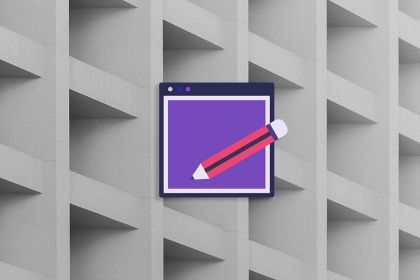
Discover how to craft UX-friendly hero sections with examples, design tips, and strategies that drive engagement and conversion.

I once sent a half-written email by accident, until Gmail saved me with an Undo button. Those tiny moments define trust in UX. In this guide, we’ll break down how to design reversible actions, when to use them, and how to choose the right recovery pattern for your product.

Small qualitative samples aren’t a weakness. They’re a strategy. This guide breaks down the evidence, the mindset gap, and how to build trust around research decisions.

From pixel art to neon palettes, retro design is resurging across marketing, gaming, fashion, and indie web. Learn how nostalgia, brand differentiation, and anti-minimalism fatigue are shaping modern UX and how to balance style with usability.